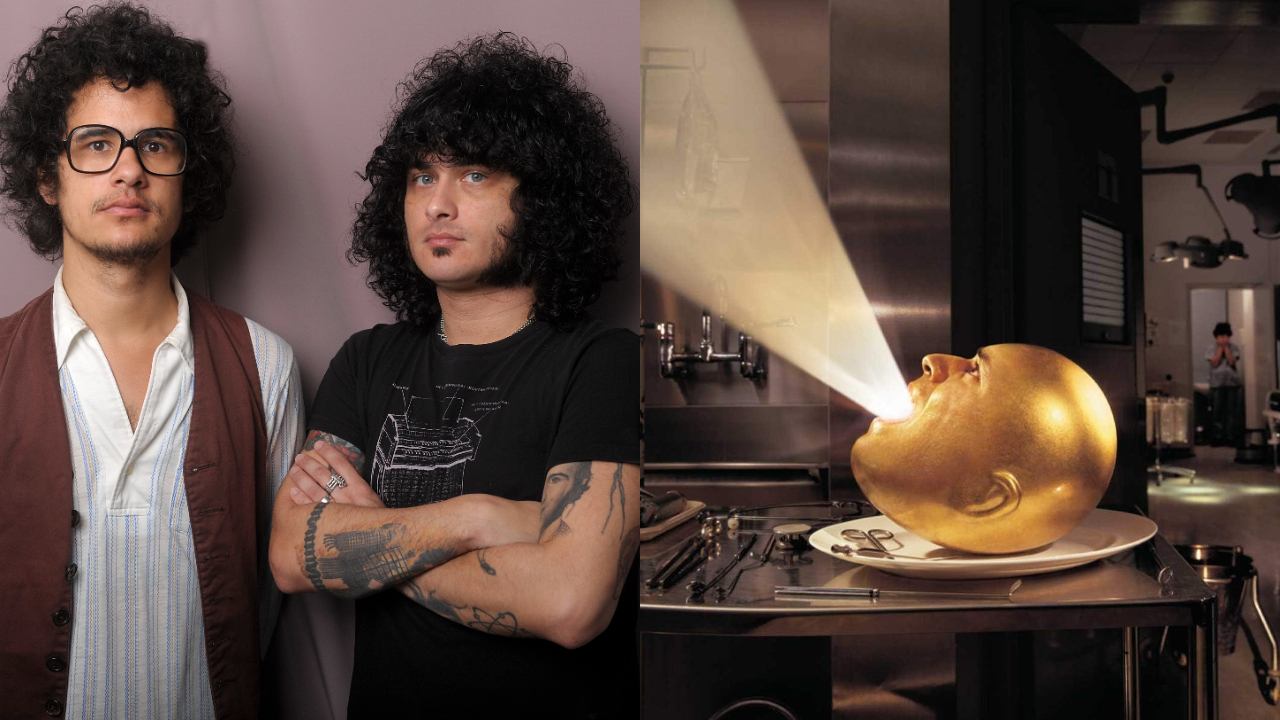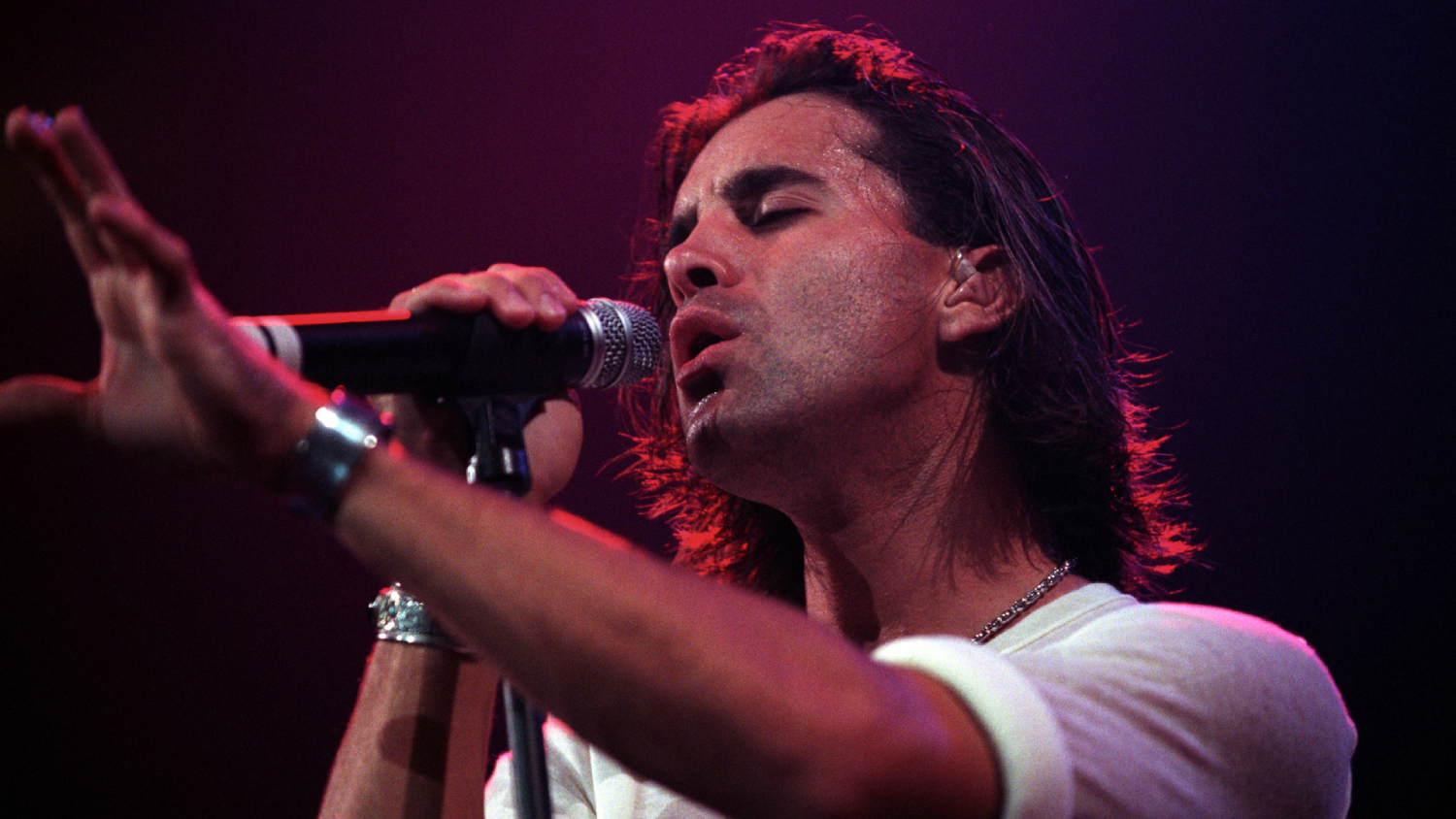How The Mars Volta's De-Loused In The Comatorium brilliantly rewired prog rock for a new generation of punk rock kids
Released in June 2003, The Mars Volta's debut album De-Loused In The Comatorium is a prog-punk masterpiece

At the dawn of the new millennium, At The Drive-In were unquestionably the most exciting band on the planet. Their 2000 masterpiece Relationship of Command had brought post-hardcore, art punk, cryptic lyrical flights of fancy and utterly chaotic live shows to a rock scene that had become bloated with childishly wacky pop-punk and dunderheaded nu metal.
They captured the imagination of fans, were loved by their peers (the album was released on the Beastie Boys' record label Grand Royal), by critics and turned up on mainstream TV shows like Late Night with David Letterman and Later... with Jool Holland (famously causing a kerfuffle by losing their shit and stealing Robbie Williams chair). They looked set to make rock’s mainstream as redundant as Nirvana had made the hair metal bands of the 1980’s.
But in March 2001, a mere 14 months after Relationship of Command’s release and just as it looked like alternative music had their new figureheads, they split up. Physically exhausted, bored of the music industry game and sick of the sight of each other, At the Drive-In were gone, stating in a press release at the time that they needed to time to “rest up and re-evaluate, just to be human beings again and to decide when we feel like playing music again."
We didn’t know it at the time, but two-fifths of At the Drive-In would come back with something even more subversive and unusual than the band they had become known for. And remarkably, against all the odds, even addiction, death and fighting their own audience couldn’t stop The Mars Volta’s De-Loused in the Comatorium from becoming a classic.
Inquests into the ATD-I split revealed that the band had divided into two camps: bassist Paul Hinojos, drummer Tony Haijar and guitarist Jim Ward on one side, the trio going on to form Sparta and release a clutch of albums indebted to Fugazi, and the duo known at the time as 'The Afros', guitarist Omar Rodriguez-Lopez and vocalist Cedric Bixler-Zavala, on the other.
Bixler-Zavala happily took the rap for the band's break up in the press in the aftermath of the split, claiming he was frustrated at feeling confined by the rules that come with being in a hardcore punk band. Apparently, he and Omar’s desire to make an ATD-I album that sounded like Pink Floyd’s Piper at the Gates of Dawn was continually dismissed by the other members. Which one might sympathise with.
Truthfullty, we didn’t expect to hear much from the duo initially, with the expectation being that they would concentrate on their dub project De Facto, who had formed in 1998 and had one self-titled EP, released in 1999, to their name at this point.
The latest news, features and interviews direct to your inbox, from the global home of alternative music.
But something else was stirring. For as the pair rehearsed with their De Facto bandmates - keyboard player Isiah Owens, sound effects man Jeremy Ward, bassist Eva Gardner and original drummer Blake Flemming (soon to be replaced by John Theodore) - it became apparent that the songs they were making were an entirely new entity.
Three songs were written and recorded, which became 2002’s Tremulant EP, the first release from the newly christened The Mars Volta. Gardner described the period as “A really exciting time, as it was just this new music.”
It was too new for some people. The EP featured 3 songs over a 20-minute run time, and was full of weird, free form progressive sounds and ambient electronic noise. If you’d bought it expecting some kind of continuation to Relationship of Command you were in for a hell of a shock.
The Mars Volta started right at the bottom. Tiny club tours were booked, with the band touring in a van like the DIY act that they then were.
Their first ever show in Anaheim, California was attended by celebrities such as Courtney Love and Winona Ryder, but was mostly remembered for Bixler-Zavala bickering with increasingly frustrated ATD-I fans, who had come expecting a punk rock show and had instead been greeted by a load of widdly, psychedelic, prog jams, and began shouting for One Armed Scissor. He eventually snapped and told the “whiny emo kids” to “go get a box of Kleenex”. It didn’t feel like a recipe for success.
There were those in high profile positions who saw the potential in The Mars Volta though. Despite deep suspicion of the music business, the band, having released Tremulant on the tiny Gold Standard Laboratories label co-owned by Omar, signed to major label Universal Music on the proviso that they maintained total artistic control.
And after Eva Gardner left in 2002, Red Hot Chili Peppers bassist Flea was so keen to champion the band that he agreed to step in for their debut album De-Loused in the Comatorium (his RHCP bandmate John Frusciante also appeared on the record), the studio sessions for which were overseen by superstar producer Rick Rubin, whose CV at the time included Slayer, The Cult, System of A Down and more.
Quite how far away from “whiny emo kids” Omar and Cedric had travelled with their new band could be seen by every facet of the creation of their debut album, from the artwork designed by Pink Floyd collaborator Storm Thorgerson, to the cast of characters involved in the recording (20 different individuals). Then there was the concept of the record, a tale of a gentleman named Cerpin Taxt, who falls into a week-long coma after overdosing on a cocktail of morphine and rat poison.
Sounds wacky, but given where Bixler-Zavala and Rodriguez-Lopez were at the time, maybe not so much. Throughout the creation of De-Loused... the pair were heavily using, with Rodriguez-Lopez telling Harp magazine in 2006 that their drug habits prior to getting in the studio were “a really positive experience.” as they stayed at home, painted, created art, read and wrote music, but by the time the band reached the studio, cracks were beginning to appear. The pair were hiding their drug use from each other, Omar had developed a stutter and had two major breakdowns. It was, in his words, “everything cliched about doing drugs, and it got really ugly, really quickly with Jeremy [Ward].”
On May 25, 2003 Jeremy Ward, having completed what would be his only contribution to a Mars Volta album, died of a heroin overdose, joining “that stupid club” at the age of 27. It was a tragedy that scared Bixler-Zavala and Rodriguez-Lopez straight, as they vowed to clean themselves up immediately.
De-Loused in the Comatorium was released on June 24, 2003. It wasn’t an instant success, peaking at a respectable if unremarkable 39 on the US Billboard 200 and at number 43 in the UK, but reviews were glowing. It received 9/10 in NME, whilst Uncut said "Imagine a jam session between King Crimson, Fugazi and '70s Miles. Now imagine it working. That's the Mars Volta." in their 4-star review. It also gained a full 5Ks from Kerrang! who claimed The Mars Volta had “seized their moment to change the face of rock and roll... whether they’re successful or not is irrelevant; it’s the taking part that counts.”
With The Mars Volta now established as one of prog-rock's most successful and essential modern artists, it’s hard to place yourself in the mindset of just how unlikely what they went on to do seemed at the time, not least because of the obstacles that the band had to overcome. But one thing is for sure; the reputation this album has is thoroughly deserved. De-Loused in the Comatorium still sounds as forward thinking, as unique and as unpredictable as it did back then, the jerking, Salsa thrash of Roulette Dares (The Haunt of) and Drunkship of Lanterns, the swinging punk-funk-jazz of This Apparatus Must Be Unearthed, the Floyd/Doors darkness of Televators or the chaotic, prog gallop of the albums “big single” (an absurd and immaterial notion for such a densely challenging record) Inertiatic Esp, they all remain as breathtaking as they did in 2003.
And the mad thing is that, as The Mars Volta’s career has progressed, so they’ve become even more challenging whilst converting more and more people to their choir. Very impressive, very strange.
Omar Rodriguez-Lopez and Cedric Bixler-Zavala were meant to give us “the next Nirvana”. They didn’t do that, but what we did get was far more interesting.

Stephen joined the Louder team as a co-host of the Metal Hammer Podcast in late 2011, eventually becoming a regular contributor to the magazine. He has since written hundreds of articles for Metal Hammer, Classic Rock and Louder, specialising in punk, hardcore and 90s metal. He also presents the Trve. Cvlt. Pop! podcast with Gaz Jones and makes regular appearances on the Bangers And Most podcast.

